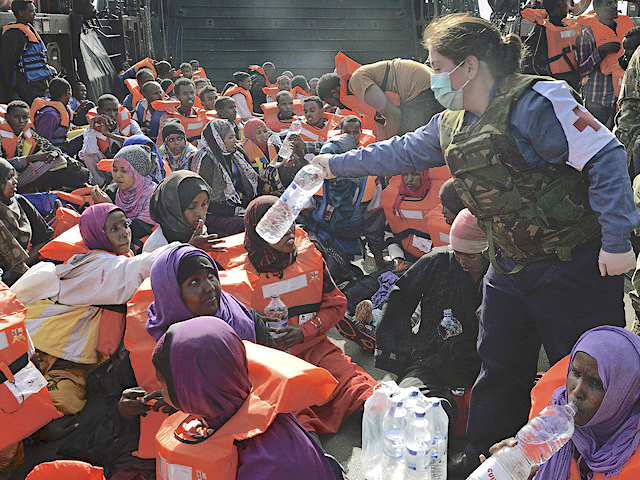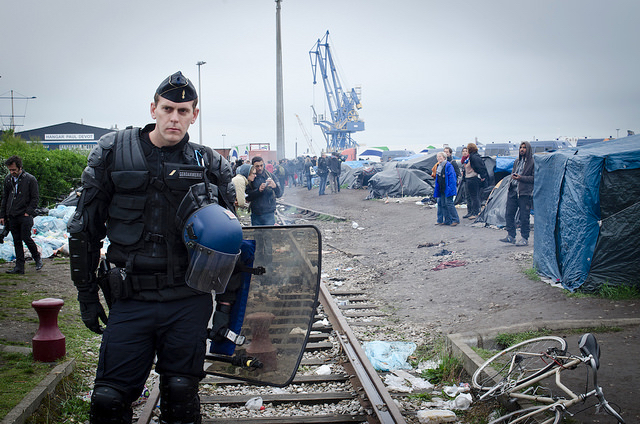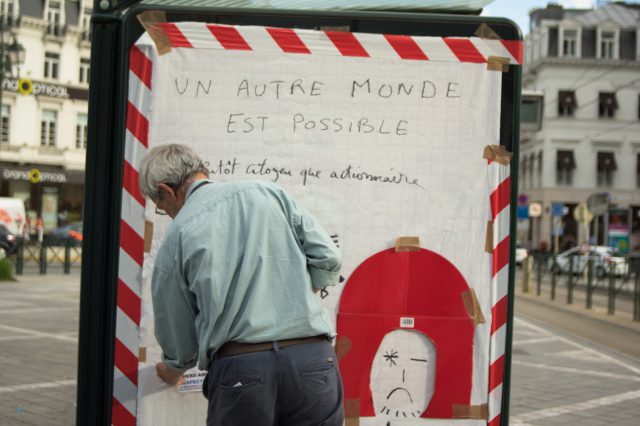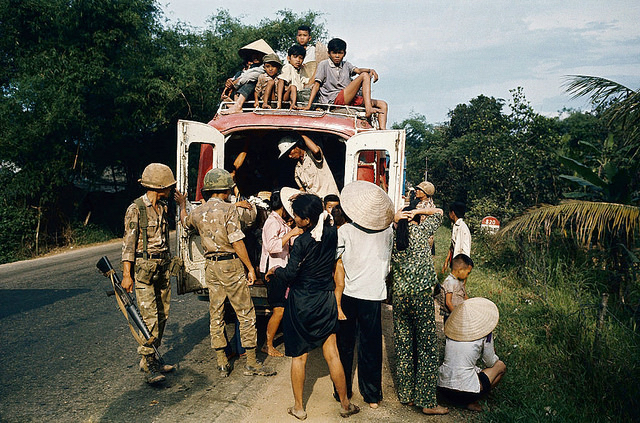When a boatload of migrants sets off from Libya in the direction of Italy, smugglers often tell those on board to get to international waters before raising the alarm. The migrants hope to be picked up by rescue boats run by humanitarian NGOs and taken on to Italy where they can apply for asylum. The alternative is interception at the hands of the Libyan coast guard and a return to Libya.
Various international conventions bar governments from committing refoulement – the forced return of people to places where their lives or freedom would be threatened or where they would face a risk of torture. If a boat is picked up by the Libyan coast guard, which cooperates with the Italian navy, they will almost certainly be sent back to Libya where strong evidence suggests many face imprisonment in deplorable conditions and possible torture. Libya has no asylum law or procedures and makes no distinction between refugees, asylum seekers and other migrants.
While Italy cannot be seen to directly push migrants back to Libya, the government has for some time been working closely with Libyan authorities to bolster the country’s coast guard, including providing boats, equipment, training and technical support. This summer, the two countries jointly created a controlled search and rescue zone in international waters between Italy and Libya, in which the search and rescue NGOs struggle to operate, unless they sign a code of conduct.
Human rights groups have strongly criticized the move, saying it puts migrants’ lives in danger by limiting their access to humanitarian assistance. Some NGO boats continued to operate in the area despite fear of being prosecuted by Italy and threats from Libya’s coast guard. There is an argument to be made that Italy’s naval support of the Libyan coast guard may be in breach of Italy’s non-refoulement obligations.
In 2012, an important judicial precedent was set when an Italian vessel intercepted Somali and Eritrean migrants traveling from Libya and sent them back. Italy was found to have violated Article 3 of the European Convention on Human Rights (ECHR). The case was a landmark because it established the applicability of the ECHR on the high seas, outside the immediate state’s territorial jurisdiction. It established that states cannot push people back towards a country where they may be subjected to inhuman and degrading treatment.
Five years on and the picture is different as Italy has no direct contact with the migrants who are being returned to Libya. The Italian coordination of Libyan-based forces confuses the issue of Italy’s legal responsibility and leaves us without a clear-cut precedent. But there are a growing number of legal experts who suggest the interception and return performed by the Libyans may amount to a degree of Italian international responsibility.
Another recent judgment by the ECHR may be relevant. This case involved N.D. and N.T. – Malian and Ivorian nationals – who were discovered attempting to illegally enter Spanish territory by scaling the barriers that surround the Melilla enclave on the North African coast. The court noted that the pair were expelled and sent back to Morocco against their wishes and in the absence of any prior administrative or judicial decision. The court stressed that preventing migrants from crossing state borders, or even driving them to another state, constituted an exercise of jurisdiction.
So all acts that constitute an exercise of jurisdiction require international human and refugee rights to be upheld as an obligation. While the exercise of authority and control seems to require a physical contact, some recent “contactless” activities by Italy may nevertheless represent de facto forms of control, exercise of authority or custody, which may be an exercise of jurisdiction under the ECHR.
It could mean that Italy may have an obligation to stop assisting Libyan authorities from sending migrants back to Libya, when they are picked up in international waters but have no physical contact with the Italians.
Italy provided training, boats and technical support to the Libyan coast guard, and by doing so, contributed to wrongful acts by Libya. Before the provision of such support, the Libyan coast guard was neither interested nor able to turn back any significant number of boats. Responsibility may come into play because of the foreseeable negative consequences of supplying technical support or equipment, even outside of Italy’s direct jurisdiction. This would, for instance, apply to a situation on May 10, 2017, when the Maritime Rescue Coordination Centre (MRCC) in Rome advised the Libyans on the location of a vessel to be intercepted in international waters and directed the Libyan coast guard to assume “on-scene command.”
The boat was intercepted and returned to Libya instead of being assisted by the German charity Sea-Watch who were also present. While the means employed were different from a classic “push-back,” the MRCC determined where the intercepted migrants would be taken. If it was established that any of the 500 people returned to Libya that day had been subject to ill-treatment or chain refoulement to their country of origin, the Italian liability could be engaged.
A similar incident took place recently in international waters on October 31, 2017. Nearly 300 people were returned to Libya as a result of a coordination exercise between the Italian warship A. Doria and the Libyan coast guard, despite the fact the Italian warship was very close to the migrants and could embark them. Also in that case the same Italian warship, provided the boat’s position to the Libyans avoiding any contact, yet displaying on the side a big banner encouraging migrants to “Keep Away.”
They clearly do not meet the classical definition of refoulement but their outcome is clear and foreseeable nonetheless. These actions facilitate refoulement wrongdoing, something Italy is obliged to avoid. The 1951 Refugee Convention principle of non-refoulement is not about deniability. It is about ensuring that such push-backs do not take place in “any manner whatsoever” as refoulement is an act defined by the consequence.
While all these activities are indeed contactless, Italy is seen as facilitating the interception and return of migrants to unacceptable conditions on shore in Libya, even if at the hands of another state.
This article originally appeared on Refugees Deeply. You can find the original here. For important news about the global migration crisis, you can sign up to the Refugees Deeply email list. The views expressed in this article belong to the author and do not necessarily reflect the editorial policy of Refugees Deeply. Photograph courtesy of the Royal Navy. Published under a Creative Commons license.





